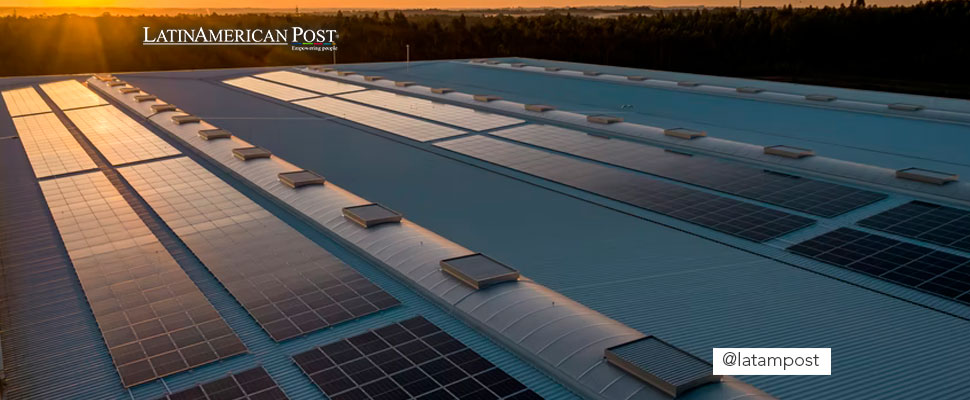Climate Change: What Were The Technological Advances Of 2021?
Climate change threatens humanity and technological advances are increasingly needed to help mitigate its impact .

Innovation and technological developments that help reduce carbon emissions, preserve biodiversity and use renewable energy are key and increasingly encouraged by governments. Photo: Unsplash
LatinAmerican Post | María Fernanda Ramírez Ramos
Listen to this article
Leer en español: Cambio climático: ¿cuáles fueron los avances tecnológicos del 2021?
If you look at 2021, COVID-19 was once again the main protagonist of the year. However, other issues, although more silent, were also of vital importance. One of the most relevant events was the United Nations Conference on Climate Change or COP26. Despite the fact that this meeting left a sour taste, the need to accelerate changes to mitigate the impact of climate change and environmental damage is becoming more evident every day.
It is not all bad news, as technological advances provide hope for change. Innovation and technological developments that help reduce carbon emissions, preserve biodiversity and use renewable energy are key and increasingly encouraged by governments. In fact, six of the 50 companies on the 2021 Fortune Future 50 list are related to climate technology such as: Enphase Energy, EVE Energy, Xinyi Solar, Adani Green Energy, LONGi Green Energy, and Contemporary Amperex Technology.
We recommend you read: The 10 Online Media Behind The Lies About Climate Change
There were several technological advances in the fight against climate change this year.
Technologies to reduce greenhouse gases
One of the most promising advances was the commissioning of a plant to capture carbon in Iceland, from the company Climeworks, which can store around 4,000 tons of CO2 per year.
Continuing with the reduction of carbon emissions, two giant gas companies, Equinor and Cadent, launched a project on December 15 that aims to create the first city that will run on hydrogen in the United Kingdom. It is estimated that converting natural gas to hydrogen could reduce the city's emissions by a quarter.
This would impact the use of heating, which accounts for around 23% of all UK emissions. The hydrogen heating tests will begin and it is estimated that by 2023 a trial test with a neighborhood will be developed. Regarding heating, New York approved, in early December, a ban on the use of gas in new buildings starting in 2023.
Day to day changes
On the other hand, there are companies that with their developments impact daily life. To mitigate the damage of the fashion industry, which is one of the most polluting and least socially responsible, the LifeLabs company announced the launch of various garments that are thermally efficient and will help combat climate change. Although it is a company that started operating in 2019, it is making constant progress. Their clothing aims to ensure that people are kept at a suitable temperature, for example in winter, without requiring so many heating systems.
Also read: Do You Know Where Your Clothes Come From?
Renewable energy: the favorites of 2021
The International Energy Agency notes that “As of late October 2021, national governments globally have allocated $ 470 billion to clean energy measures as part of their economic response to the Covid-19 crisis, an increase of 90 billion dollars or 20% compared to the end of July ”. In addition, according to a report by the United States Solar Energy Industry Association , in the last quarter, this country installed 5.4 gigawatts (GW dc) of photovoltaic solar capacity, which represents the energy for 21.8 million of American households. It is estimated to be a record year for the installation of this type of energy.
In addition, an IHS Markit research predicts that by 2022 the increase in solar energy in the world will be 20%. When it comes to wind power, this year's report by Wood Mackenzie, dedicated to research on the natural resources industry, estimates that global wind power capacity will grow, from 2021 to 2030, by 9% per year. In this area, the Mammoet company advanced in the construction of the largest floating wind turbine on the planet in the WindFloat Atlantic project, a floating wind farm located on the European coast. According to Mammoet, the park “is generating a capacity of 25MW; equivalent to the energy consumed by 60,000 homes in one year ”.
#ICYMI: India recorded 46.2 GW of installed solar capacity at the end of October, led by installations in the states of Rajasthan, Karnataka, and Gujarat https://t.co/y83Ry0IN0h #SDG7 #SolarEnergy #renewables pic.twitter.com/GDPR8t8TQ1
— Power for All (@Power4All2025) December 13, 2021
Despite all these technological advances and developments, there is a key issue today and that is climate justice. Technological developments and sustainability solutions need to be accessible to everyone, especially the most vulnerable communities, which, according to the analyzes, will be the most affected by the effects of climate change.




